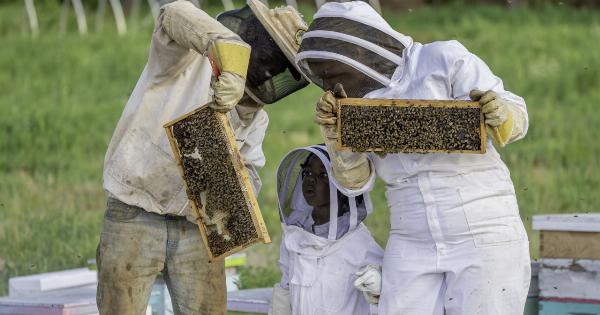Infidelity is a complex and deeply personal issue that can cause immense pain and damage to relationships. While cheating can occur at any time of the year, there may be certain months when individuals are more likely to engage in infidelity.
In this article, we will explore these patterns and discuss the reasons behind them. We will also provide insights and strategies to help couples maintain healthy, faithful relationships.
The Influence of Seasonality on Cheating Patterns
It is intriguing to observe that cheating rates may fluctuate throughout the year. Several studies have suggested that certain months tend to have higher rates of infidelity compared to others.
While these findings should not be considered definitive proof, they do highlight interesting trends that might shed light on the motivations behind cheating behaviors.
January: The Month of Reflection and Resolutions
The start of a new year often prompts individuals to reflect on their lives and relationships. January, with its focus on self-improvement and setting resolutions, can also trigger feelings of dissatisfaction and introspection.
For some individuals, this period of self-reflection may lead them to question their current relationship and explore alternatives through infidelity.
February: Balancing Romance and Expectations
As February rolls around, the pressure to create the perfect romantic experience for Valentine’s Day can sometimes cause stress and strain in relationships.
The desire for grand gestures and unrealistic expectations may propel some individuals to seek validation or excitement outside of their committed partnerships during this month.
March: Spring Awakening and Opportunity
Spring, often associated with rejuvenation and new beginnings, may contribute to an increase in cheating behaviors.
The longer days, flourishing landscapes, and increased social interactions in this season create new opportunities for individuals to meet and connect with potential partners. This newfound energy and desire for exploration can sometimes lead to unfaithful actions.
April: Prankish Behavior and Deception
April Fool’s Day, celebrated on the first of April, revolves around pranks and deception. While harmless pranks can add humor to relationships, some individuals might exploit this atmosphere to engage in more deceitful behaviors.
The blurred lines between joking and betrayal can make it easier for cheaters to rationalize their actions during this month.
May: Spring Fever and Temptations
May, another month of spring, often brings about a sense of renewal and optimism. The warmer weather, blooming flowers, and increasing social activities can create an environment that fuels desire and temptation.
These external factors, combined with personal dissatisfaction, can make individuals more prone to cheating during this time.
June: Summer Heat and Emotional Affairs
The arrival of summer brings hotter weather and an increase in outdoor activities. The change in routine, vacations, and longer daylight hours can contribute to a relaxed and carefree atmosphere.
This environment can facilitate emotional connections outside of committed relationships, leading to an upsurge in emotional affairs during the summertime.
July: Vacation and Distance
The summer months often involve vacations and getaways. Couples may spend time apart due to work trips or family visits, leading to potential feelings of loneliness and separation.
The physical distance, combined with a relaxed atmosphere and reduced accountability, can make individuals more susceptible to cheating during this period.
August: The Heat Intensifies
The soaring temperatures in August can also contribute to increased sexual desires and restlessness. The hot weather can create an environment that fosters flirtatious interactions and impulsive decisions.
These factors, coupled with personal dissatisfaction or relationship issues, can heighten the likelihood of infidelity during this month.
September: Back to Reality, Back to Temptation
September marks the end of the summer season and the return to routines and responsibilities. After periods of freedom and relaxation, individuals may struggle to adjust to the demands of everyday life.
This transitional phase can lead some individuals to seek excitement and escape through infidelity.
October: Halloween Thrills and Secrets
Halloween, celebrated on the 31st of October, is a time associated with mystery and disguise. The allure of secrecy and hidden identities might resonate with individuals seeking secret affairs or clandestine encounters.
This holiday can serve as a catalyst for cheaters, allowing them to engage in discreet behaviors under the guise of costumes and masks.
November: Emotional Disconnect and Distress
As the year nears its end, many individuals experience heightened stress and emotional turmoil. The pressure of various obligations, such as family gatherings and holiday preparations, can lead to emotional disconnect within relationships.
This distress, combined with existing relationship issues, may drive some individuals to seek solace or satisfaction outside of their commitments.
December: The Holiday Season and Temptation
The holiday season, with its festivities and gatherings, can bring both joy and strain for couples. The expectations of gift-giving, socializing, and spending time with family can create significant stress.
This emotional strain, coupled with a desire for temporary escapism, can make individuals more vulnerable to cheating during this season.
Maintaining Healthy Relationships Throughout the Year
While the presence of certain patterns might hint at potential risks, it is important to remember that infidelity can occur at any time.
Building open communication, trust, and commitment in a relationship is vital for maintaining a healthy long-term partnership. Cultivating individual and collective growth, prioritizing emotional intimacy, and seeking professional support when needed are essential strategies to help couples navigate the challenges they may face.
In conclusion, while it can be interesting to explore the months when cheaters are most likely to engage in infidelity, it is crucial to approach these findings with caution.
Every relationship is unique, and countless individual factors contribute to the decision to cheat. Building and nurturing a relationship based on trust, respect, and open communication can help minimize the risk of infidelity, regardless of the time of year.





























